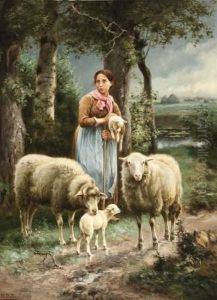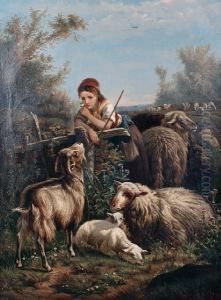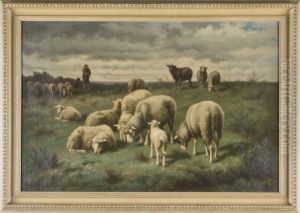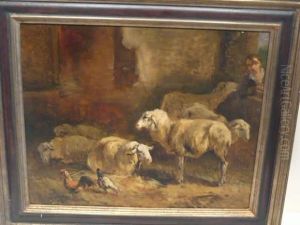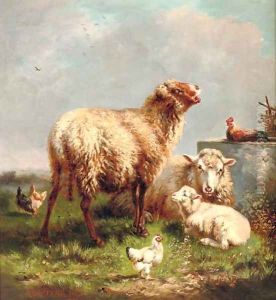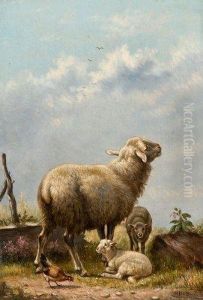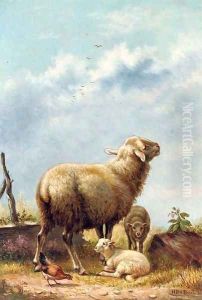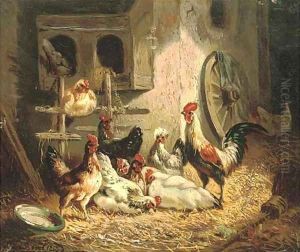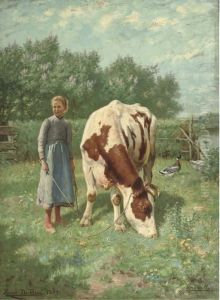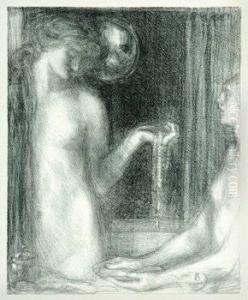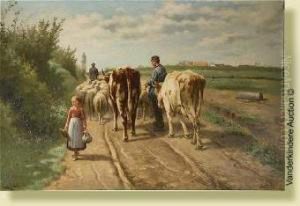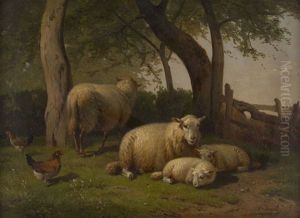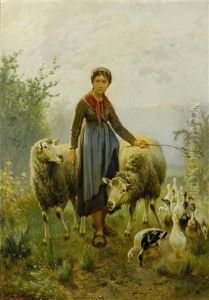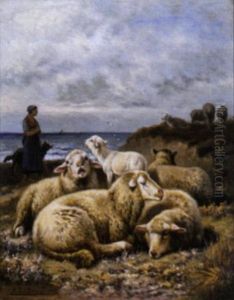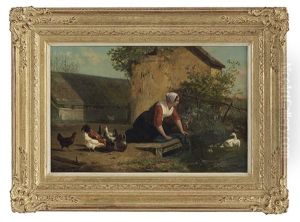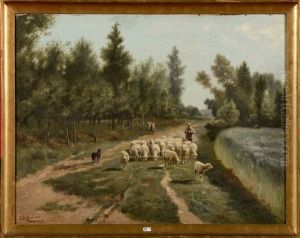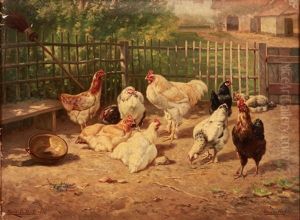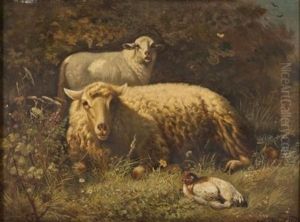Henri De Beul Paintings
Henri De Beul was a Belgian landscapist born on December 9, 1845, in Brussels. He is known for his rural scenes, often depicting the Flemish countryside with a level of sentimentality and nostalgia. De Beul was a product of the Romantic movement, and his work typically features lush, verdant landscapes with pastoral elements, such as farm animals and rustic farmhouses, rendered with a degree of realism.
Henri De Beul studied at the Academy of Fine Arts in Brussels under the guidance of notable instructors such as Joseph Quinaux. His education and training in the fine arts provided him with a solid foundation in traditional painting techniques, which he would later apply to his bucolic landscapes.
Throughout his career, De Beul participated in various exhibitions, and his work was well-received by critics and collectors alike. He became a member of the artistic group 'L'Essor,' which was a collective of Belgian artists that advocated for freedom of expression and the rejection of academic constraints in favor of individual creativity.
Despite his success, Henri De Beul never achieved the same level of fame as some of his contemporaries, like Alfred Sisley or Camille Pissarro. Nevertheless, his paintings have continued to garner appreciation for their serene depiction of the Flemish countryside and their contribution to the landscape genre in Belgian art.
Henri De Beul's life was relatively short, and he died in 1900. However, his paintings remain as a testament to his skill and his love for the rural landscapes of his homeland. Today, his works can be found in various museums and private collections, and they continue to be studied for their technique and historical value within the context of 19th-century Belgian art.
